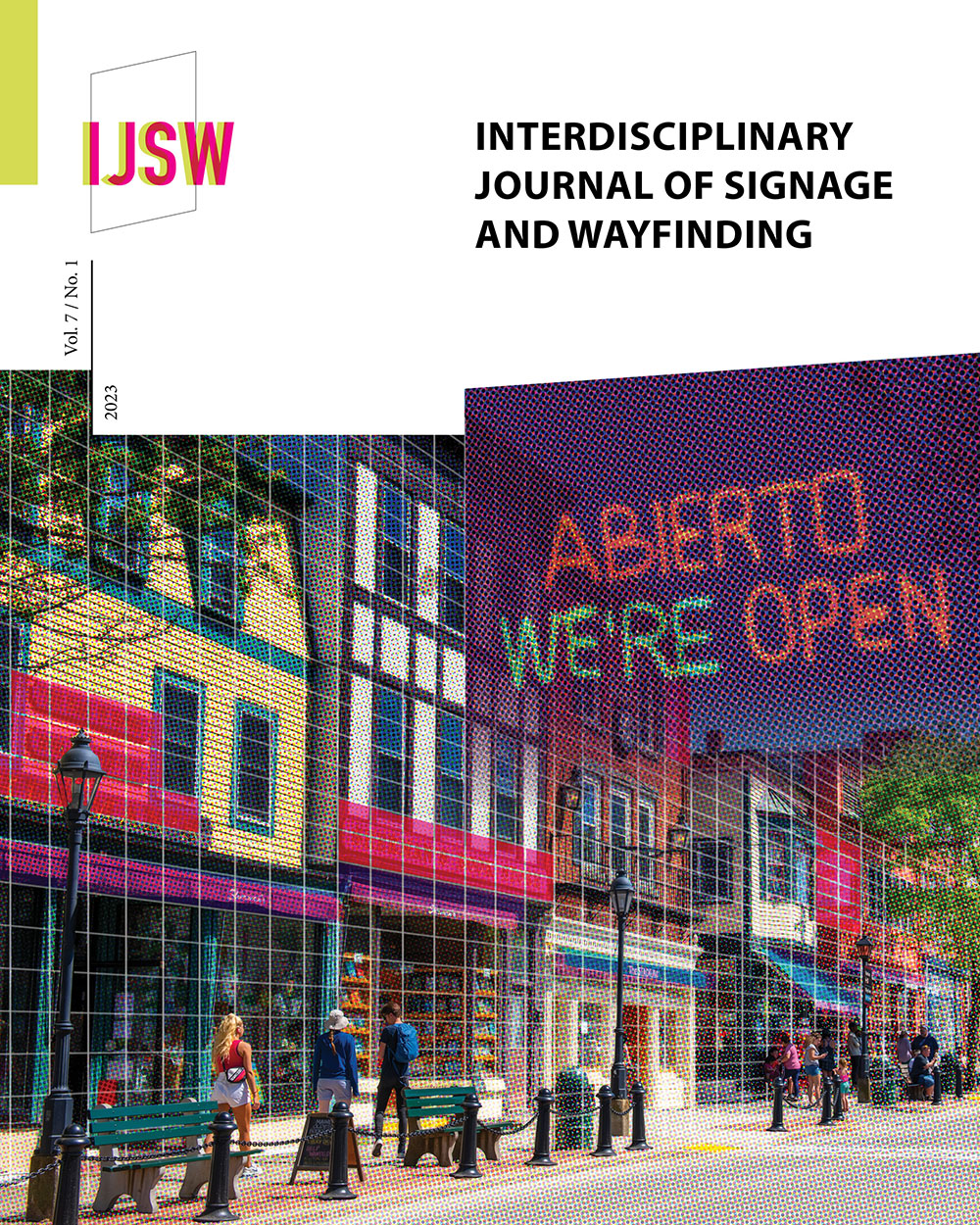Bilingual Signs: How Language Influences Shoppers
Main Article Content
Abstract
A growing use of bilingual signage among retailers in the United States begs the question, How do shoppers react to bilingual signs? How is such signage processed by consumers, what does it signal, and to what effect? Drawing from a national panel of American consumers, we exposed participants to examples of English, bilingual, or Spanish signage in a program of experiments that measured behavioral intentions, attitudes toward the stores and signs, and various expectations, perceptions, and impressions. Results show a direct effect of the language of the sign on shoppers’ behavioral intentions to engage with and buy from a store. Evidence shows that evaluations of signs shape evaluations of the stores they represent. Additionally, the language used on signs shapes shoppers’ expectations of service quality, with bilingual signs engendering favorable impressions of authenticity, inclusiveness, and interestingness. Signs using only a foreign language, by contrast, tend to lower expectations of service, communication, and inclusiveness.
Article Details
References
Cacioppo, J. T., Petty, R. E., & Morris, K. J. (1983). Effects of need for cognition on message evaluation, recall, and persuasion. Journal of Personality and Social Psychology, 45(4), 805–818. DOI: http://dx.doi.org/10.1037/0022-3514.45.4.805. DOI: https://doi.org/10.1037/0022-3514.45.4.805
Cialdini, R. B. (2009). Influence: Science and practice (5th ed.). Pearson Education.
Coomer, B. (2012, October). Tour the new “party” Kroger. Houston Chronicle https://www.chron.com/news/houston-texas/slideshow/Tour-the-new-party-Kroger-51316.php
de Villiers, G., Costandius, E., Brazier, K., & Perold-Bull, K. (2022). Towards linguistic inclusivity: An exploration of the wayfinding system at Stellenbosch University, South Africa. Interdisciplinary Journal of Signage and Wayfinding, 6(2), 31-42. DOI: http://dx.doi.org/10.15763/issn.2470-9670.2022.v6.i2.a119. DOI: https://doi.org/10.15763/issn.2470-9670.2022.v6.i2.a119
Dynamic Language. (2022). A demographic look at Spanish speakers in the U.S. Retrieved December 2, 2022, from https://www.dynamiclanguage.com/a-demographic-look-at-spanish-speakers-in-the-u-s/.
Goldsmith, R. E., Lafferty, B. A., & Newell, S. J. (2000). The impact of corporate credibility and celebrity credibility on consumer reaction to advertisements and brands. Journal of Advertising, 29(3), 43–54. DOI: http://dx.doi.org/10.1080/00913367.2000.10673616. DOI: https://doi.org/10.1080/00913367.2000.10673616
Hayes, A. F. (2021). Introduction to mediation, moderation, and conditional process analysis: A regression-based approach. The Guilford Press.
Kellaris, J. J. (2010). Marketing student’s attitudes towards and beliefs about commercial signage. In M. K. Brady, & M. D. Hartline (Eds.), Marketing theory and applications: 2010 AMA winter educators’ conference (pp. 224–225).
Kellaris, J. J., & Machleit, K. A. (2016). Signage as marketing communication. Interdisciplinary Journal of Signage and Wayfinding, 1(1), 1–17. DOI: http://dx.doi.org/10.15763/issn.2470-9670.2016.v1.i1.a4. DOI: https://doi.org/10.15763/issn.2470-9670.2016.v1.i1.a4
Kellaris, J. J., Machleit, K., & Gaffney, D. R. (2020). Sign evaluation and compliance under mortality salience. Interdisciplinary Journal of Signage and Wayfinding, 4(2), 51–66. DOI: http://dx.doi.org/10.15763/issn.2470-9670.2020.v4.i2.a65. DOI: https://doi.org/10.15763/issn.2470-9670.2020.v4.i2.a65
Kostyk, A., Leonhardt, J. M., & Niculescu, M. (2021). Processing fluency scale development for consumer research. International Journal of Market Research, 63(3), 353–367. DOI: http://dx.doi.org/10.1177/1470785319877137. DOI: https://doi.org/10.1177/1470785319877137
Kruglanski, A. W., & Webster, D. M. (1996). Motivated closing of the mind: “Seizing” and “freezing.” Psychological Review, 103(2), 263–283. DOI: http://dx.doi.org/10.1037/0033-295x.103.2.263. DOI: https://doi.org/10.1037/0033-295X.103.2.263
Leeman, J. (2018). It’s all about English: The interplay of monolingual ideologies, language policies, and the U.S. Census Bureau’s statistics on multilingualism. International Journal of the Sociology of Language, 2018(252), 21–43. DOI: http://dx.doi.org/10.1515/ijsl-2018-0013. DOI: https://doi.org/10.1515/ijsl-2018-0013
Liu, F., Murphy, J., Li, J., & Liu, X. (2006). English and Chinese? The role of consumer ethnocentrism and country of origin in Chinese attitudes towards store signs. Australasian Marketing Journal, 14(2), 5–16. http://dx.doi.org/10.1016/s1441-3582(06)70057-x. DOI: https://doi.org/10.1016/S1441-3582(06)70057-X
Neuliep, J. W., & McCroskey, J. C. (1997). The development of a U.S. and generalized ethnocentrism scale. Communication Research Reports, 14(4), 385–398. DOI: http://dx.doi.org/10.1080/08824099709388682. DOI: https://doi.org/10.1080/08824099709388682
Schwarz, N. (2004). Metacognitive experiences in consumer judgment and decision making. Journal of Consumer Psychology, 14(4), 332–348. DOI: http://dx.doi.org/10.1207/s15327663jcp1404_2. DOI: https://doi.org/10.1207/s15327663jcp1404_2
Shimp, T. A., & Sharma, S. (1987). Consumer ethnocentrism--Construction and validation of the CETSCALE. Journal of Marketing Research, 24(3), 280–289. DOI: http://dx.doi.org/10.1177/002224378702400304. DOI: https://doi.org/10.1177/002224378702400304
Taylor, C. R., Claus, T. A., & Claus, S. L. (2005). On-premise signs as storefront marketing devices and systems (1st ed.). U.S. Small Business Administration.
Webster, D. M., & Kruglanski, A. W. (1994). Individual differences in need for cognitive closure. Journal of Personality and Social Psychology, 67(6), 1049–1062. DOI: http://dx.doi.org/10.1037/0022-3514.67.6.1049. DOI: https://doi.org/10.1037/0022-3514.67.6.1049
World Population Review. (2022). Spanish Speaking States [Updated January 2023]. Retrieved December 2, 2022, from https://worldpopulationreview.com/state-rankings/spanish-speaking-states

